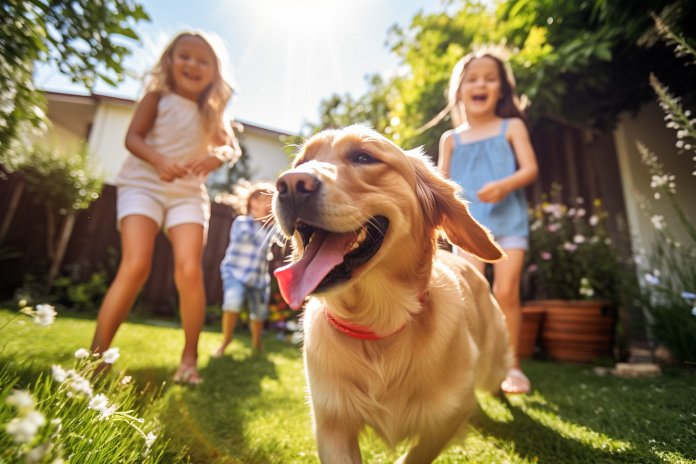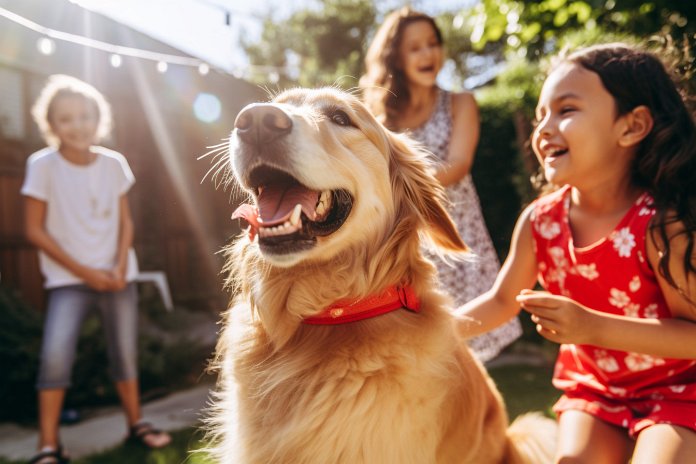
Do you struggle with remembering names and faces? It’s understandable if it happens with unfamiliar people, but what about your own family? Can they recognize you easily? Well, there’s one family member you might not have considered – your dog! So, can your furry friend tell you and your family apart from other humans?
Signs Your Dog is Comfortable or Uncomfortable with Someone:
While every dog is different, there are some general signs to look out for. If your dog is comfortable with someone, they may wag their tail, bark excitedly, jump up on them, and try to lick them. Their ears will be up and their body language will show excitement. On the other hand, if your dog is uncomfortable, they may bark at the person without wagging their tail or jumping up on them. They might also put their ears back, growl, or act aggressively if they feel threatened.
Body Language:
Here are some signs that indicate your dog is comfortable with someone: barking, jumping up, wagging tail, licking, and ears up. On the other hand, signs that your dog is uncomfortable include aggressive barking, tail down, ears back, and growling.
History of Dogs Recognizing Family Members:
Dogs have descended from wolves, which are pack animals. Dogs and humans both live in groups, and recognizing all members of the group is important for functioning properly. While it was previously believed that only humans and some primates could recognize faces, recent research suggests that dogs can too. There are many heartwarming videos online showing dogs recognizing their owners after long absences, indicating that dogs can use different senses to determine who is important to them.
Science Behind Dogs Recognizing Family Members:
Studies have shown that dogs are especially interested in the eyes on faces and can recognize facial features. Dogs that live with families are more interested in human faces compared to dogs living in kennels. Additionally, dogs have strong senses and can pick up on things like people’s routines, noises, and unique smells. Dogs can even recognize family members without any training.
Training Your Dog to Recognize Others:
While dogs can be trained to identify faces, it’s more likely that they will naturally recognize family members. Spending time together, playing, and allowing the new person to feed the dog can help them become more familiar. However, if your dog doesn’t like the new person, it’s important to seek professional help to avoid any discomfort or harm.
In conclusion, dogs can recognize their human family members based on various cues and senses.
“Dogs can recognize their human family members through facial recognition and other senses.”

Tips & Things to Know
1️⃣ Pay attention to your dog’s body language: Watch for signs that your dog is comfortable or uncomfortable with someone, such as wagging their tail and excited barking versus growling and aggression. Understanding your dog’s body language can help you gauge their familiarity with different people.
2️⃣ Dogs can recognize facial features: Research suggests that dogs can recognize facial features, similar to humans. They may use different senses, such as sight and smell, to determine who is in front of them. Pay attention to how your dog reacts to different family members to see if they can distinguish between them.
3️⃣ Training may not be necessary: While dogs can be trained to identify faces, it is more likely that they will naturally recognize their family members without any specific training. Spending time together and allowing your dog to become familiar with new people in a positive way can help strengthen their recognition of family members. However, if your dog shows persistent discomfort or aggression towards a family member, it may be best to seek help from a professional trainer or veterinarian.
Frequently Asked Questions, Answered ✅
1. How can I tell if my dog is comfortable or uncomfortable with someone?
– Some signs that your dog is comfortable include wagging tail, barking excitedly, jumping up, licking, and ears up. Signs of discomfort may include barking but not wagging tail, not jumping up, growling, ears back, and aggressive behavior.
2. What are some signs of discomfort that my dog might show?
– Signs of discomfort in dogs may include aggressive barking, tail down, ears back, growling, and exhibiting aggressive behavior.
3. Why do dogs recognize their family members?
– Dogs have descended from wolves, which are pack animals. Recognizing all members of the group is critical for proper functioning. Dogs use different senses, such as facial recognition, scent, and observing habits and noises, to determine who is in front of them.
4. Can dogs be trained to recognize family members?
– While dogs can be trained to do many things, it is more likely that they will be able to recognize family members on their own without specific training. Spending time together and allowing the dog to observe and learn the habits and smells of new family members can help them become more familiar.
5. What should I do if my dog does not like a new family member?
– If your dog shows discomfort or aggression towards a new family member, it is important not to push the interaction. Seek help from a professional trainer or your vet to address the situation and ensure the safety and comfort of both the dog and the new family member.